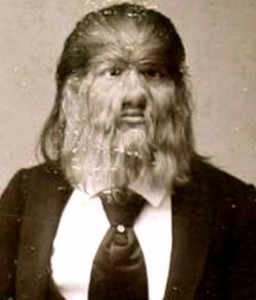MUTATION STORY
Hello, my name is hypertrichosis and I am a genetic mutation. I am made from insertion which is adding amino acids to change the genetic code on my host’s body. My host’s body is named Franklin. I change the genetic code in Franklin’s body to make his hair grow uncontrollably all over his body, even in places where hair is not supposed to go such as on his forehead and nose. Franklin could not control his hair growth at all which caused him to live a different life than most other people.
The main cause of mutations like me happen because you add amino acids into the genetic code which changes the way you’re normal cells function which will make it so the hair will grow excessively in either one bizarre place (localised hypertrichosis) or through the whole body (generalised hypertrichosis). Franklin has generalised hypertrichosis so it is very difficult to control his hair growth.

THE MAKING OF MUTATION STORY
Ask: What causes this type of mutation?
What affects does it have?
How can I make an interesting story out of this information?
Acquire: I got the information by doing a quick google search. I used a few different websites as you can see in my sources category.
Analyze: In this stage I basically just thought to myself: How can I make this information work with the goal of this project. I then began to write in my own words the information that I wanted to use in my story.
Apply: As I was applying the information, I referred to the questions I asked at the start and I wrote the story according to those questions. (as well as the criteria sheet questions).
Assess: When I was finished with the story I reanalyzed it. I think the information process went well. I maybe could have done more just to make the story more interesting but I think I got a good result none the less. The information fluency process can be applied with a lot of other things in school too, so it’s a useful thing to know.
Sources: https://en.wikipedia.org/wiki/Hypertrichosis
https://www.google.ca/webhp?sourceid=chrome-instant&ion=1&espv=2&ie=UTF-8#q=hypertrichosis






